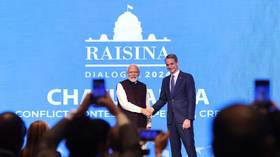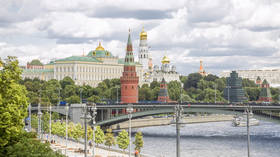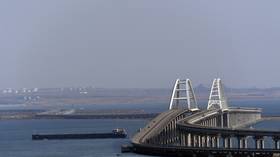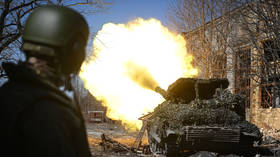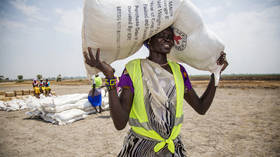New Delhi raises target for defense exports

The Indian government has increased its annual target for defense and aerospace production to $36 billion, while raising the export target to $6 billion. Indian Defense Minister Rajnath Singh said the country aims to increase its production of jet engines and gas turbines to reach the new goal.
“Earlier, India was known to be an arms importer. But today, under the leadership of the prime minister, we have come out of our comfort zone and found a place in the list of top 25 arms-exporting nations,” Singh asserted while speaking at a defense summit on Saturday.
“From an arms importer,” Singh noted, “India [has] found a place in the top 25 arms exporting nations.” Defense exports did not even reach $120 million, seven or eight years ago, he pointed out. In the last fiscal year, the Ministry of Defense reported that exports soared to nearly $2 billion – a nearly tenfold increase since 2016-17, according to the Times of India.
The sharp spike in exports of Indian-made hardware is believed to stem from global interest in the country’s recent projects, such as the light combat Tejas aircraft, light combat helicopters, and aircraft carriers. Meanwhile, interest in supersonic cruise missiles developed by BrahMos Aerospace, an Indo-Russian joint venture, is also believed to be quite high. In 2022, BrahMos signed a $375 million deal with the Philippines to deliver the high-capability missiles, and New Delhi recently ordered 200 more.
Meanwhile, Russia continues to be India’s largest arms supplier, even though its share of Indian defense imports fell from 62% to 45% from 2017-2022, according to the Stockholm International Peace Research Institute.
In a previous spending roadmap, the Defense Production Policy of 2018, the South Asian nation had set a target of $26 billion for aerospace and defense services and production turnover and exports worth $5 billion by 2025. India’s 2018 policy stressed the need to promote the ‘Make in India’ initiative while seeking to create a “dynamic, robust and competitive defense and aerospace industry.”
New Delhi has made lists of thousands of defense systems that are to be “indigenized,” while also inviting start-ups into the sector, Singh revealed, terming it a step taken for long-term advantage. “These companies, on the back of their innovations, will help give a new dimension to India’s strong identity on the global stage,” the defense minister stated.
This fiscal year, India has approved capital acquisitions worth more than $53 billion, stated Singh. At the same time, Finance Minister Nirmala Sitharaman announced an allocation of $74.8 billion to the defense sector – the highest among all ministries – in the interim budget announced earlier this month.
Where India Meets Russia – We are now on WhatsApp! Follow and share RT India in English and in Hindi
